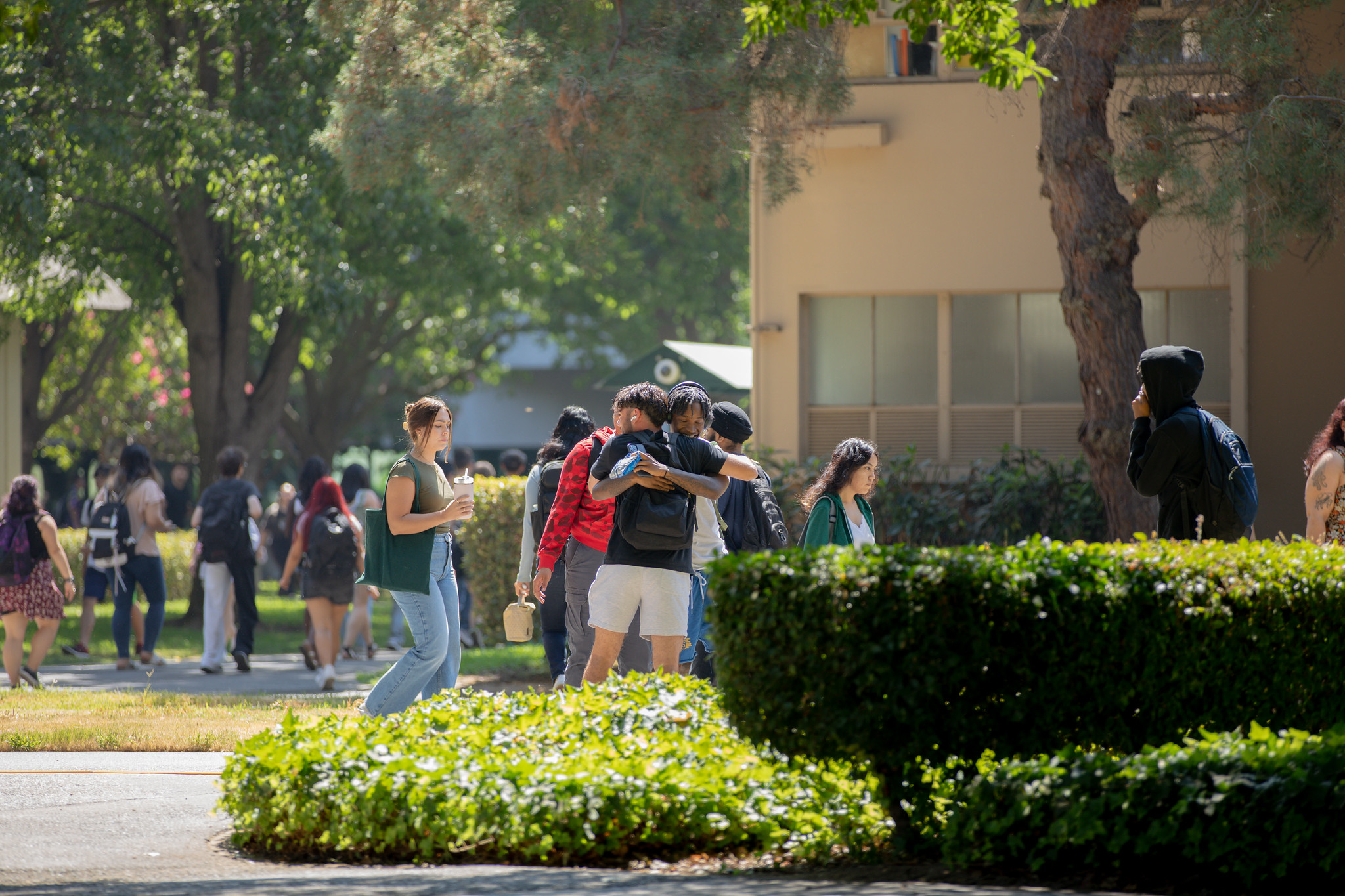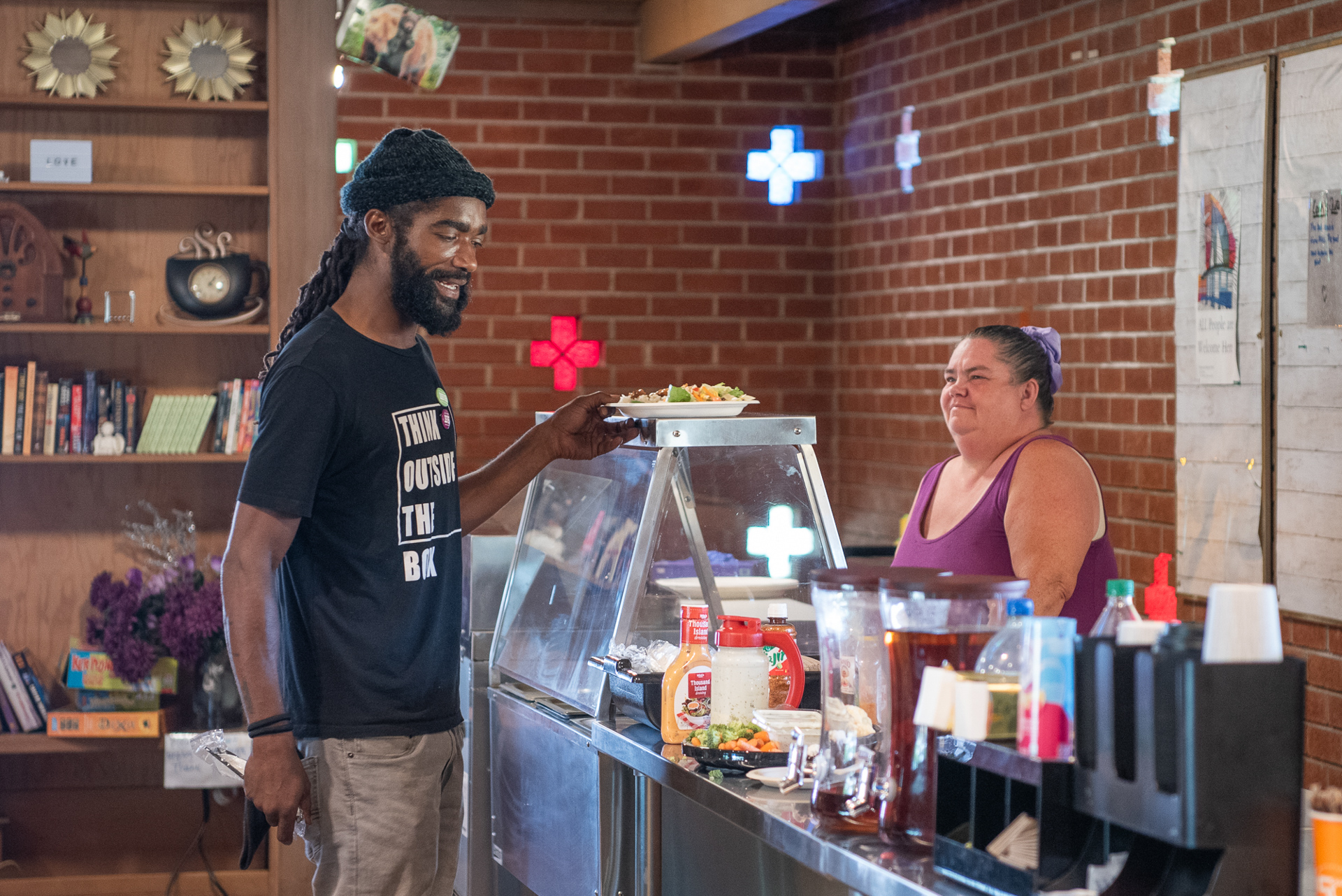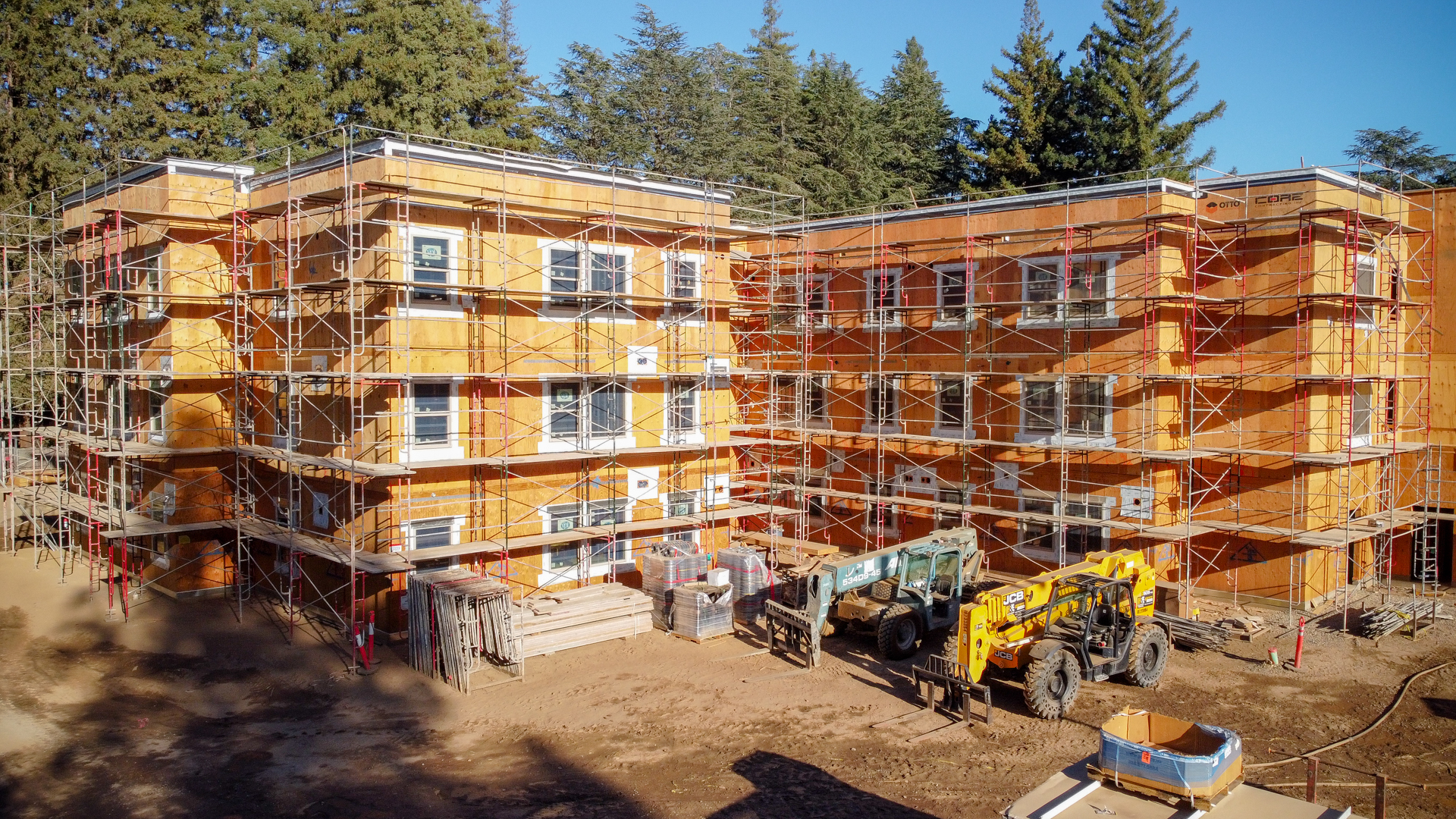Story Content
Eclipse party draws large, enthusiastic crowd to Sacramento State
October 16, 2023
Little Aminah Ellis awoke at 3 a.m. on Saturday, anticipating a family excursion to Sacramento State to watch the moon slip in front of the sun, leaving a fiery orange rim in the sky.
“I want to see a solar eclipse!” Aminah, 7, exclaimed as she and her mother and brother waited to witness an astronomical marvel.
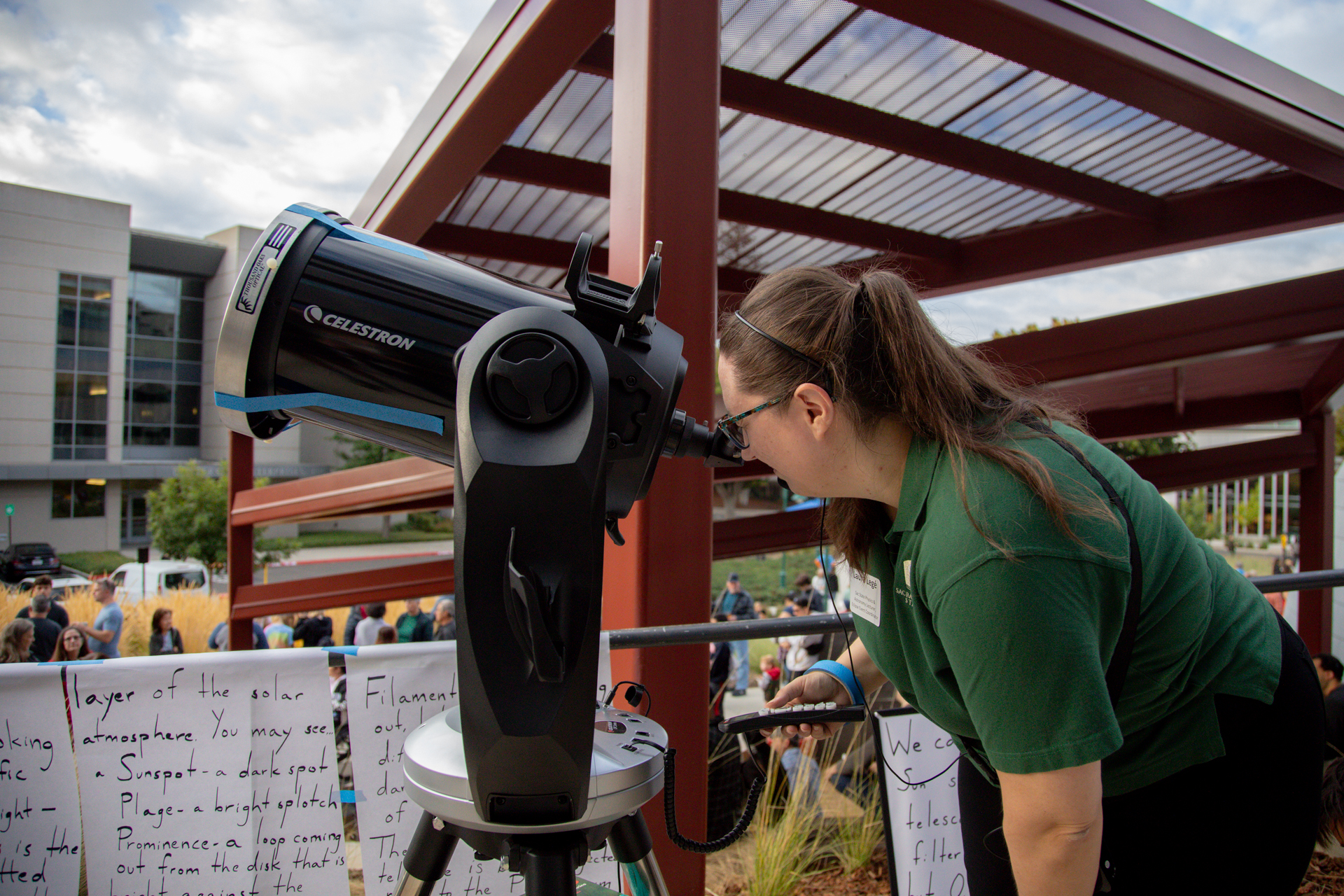
They were among the more than 1,000 people who visited Sac State to witness the annular solar eclipse as part of a viewing party, hosted by the University’s Physics and Astronomy department, at the Planetarium, part of the Ernest E. Tschannen Science Complex. Participants saw Planetarium shows about eclipses and peered through telescopes and fashioned pinhole cameras. Children, many arriving in their pajamas, built their own constellations with art supplies.
None were more enthusiastic than Aminah, who woke in the wee hours Saturday morning excited about seeing “orange surrounding the moon,” as she explained it.
“She woke up at 3, then 4, counting down the time until we could get here,” said her mother, Kimberly Clark.
A solar eclipse occurs when the moon moves in between the sun and Earth. This time, the alignment occurred when the moon was at its farthest point from Earth, obscuring most of the sun, but leaving its outer rim – annulus – visible as the so-called “ring of fire.”
The eclipse began just after 8 a.m. as the moon began moving across the face of the sun. It completed its journey at 10:43 a.m.
At Sac State, viewers donned protective glasses and exclaimed when clouds broke and revealed spectacular views of the eclipse. Participants posed for selfies in front of the Planetarium and attached safety glasses to their phones to record images of the sky.
“Keep watching!” Physics Professor Chris Taylor shouted to the large audience during periods when clouds obscured the sun. “It will be coming out again soon!”
Taylor said he never tires of seeing solar eclipses, which occur once or twice a year somewhere on Earth but are not always visible in Sacramento.
“An eclipse is a great chance for public astronomy,” he said. “It’s just neat to see the sun disappear behind the moon. This seemed like a natural thing to invite everyone to come here and see it, and to experience our Planetarium.”
Vivian Lege, 7, had good reasons to attend. Her mother, Laura, is a Physics and Astronomy lecturer at Sac State. Vivian is, by her father Jack’s description, a “science girl,” who enjoys conducting home experiments such as creating her own erupting volcanoes.
“I think it’s pretty cool,” Vivian said of the eclipse.
Teresa and David Gonzalez brought their son Cruz, 7.
“We live just down the road, so we walked over,” Teresa Gonzalez said. “This is great.”
Cruz “is totally into science,” David Gonzalez said. “He’s learned about it on his own, and we’re encouraging it.”
Inside the domed Planetarium, Physics Lecturer Kyle Watters, the facility’s director, entertained an ongoing wave of guests with presentations throughout the morning.
“The Earth is the only spot where a beautiful view of an eclipse is possible,” Watters told attendees. “This is what you will see today.”
Anticipation built throughout the morning as the eclipse neared its peak. Viewers trained their eyes, covered by safety glasses, toward the sky, and saw a thin, fiery orange crescent.
“There it is!”
“Oh my gosh!”
“Mom, I see it! I see it!”
“Wow!”
They cheered and clapped as the moon obscured most of the sun, an image that was projected on a computer screen in the courtyard. The show was nearly over.
Even before she departed Sac State, Aminah Ellis had decided what her future would look like.
“I’m going to be a scientist,” she said, “One that looks at space.”
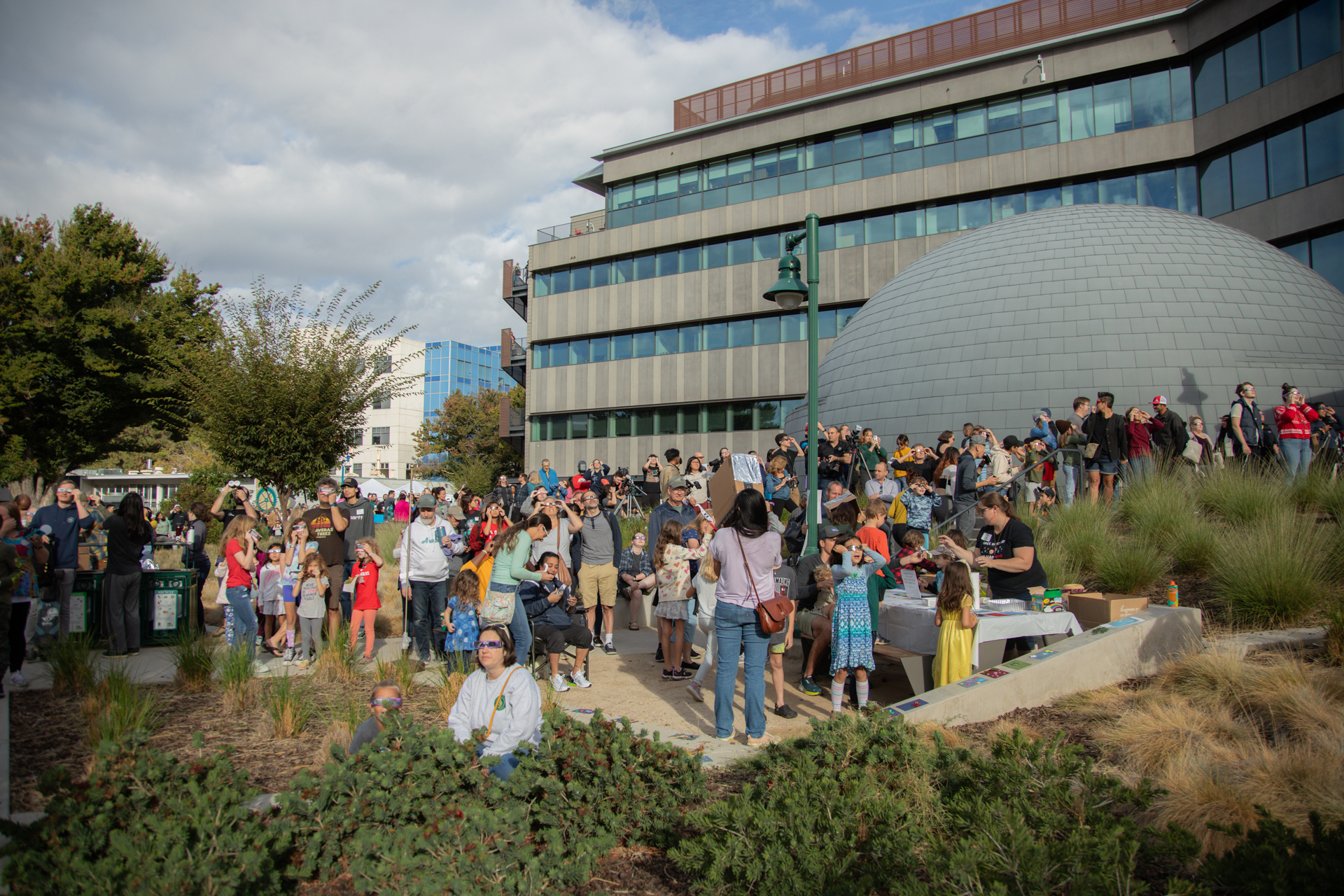
Media Resources
Faculty/Staff Resources
Looking for a Faculty Expert?
Contact University Communications
(916) 217-8366
communications@csus.edu
